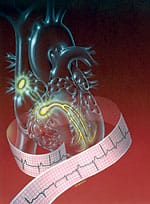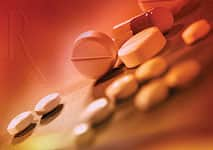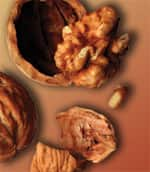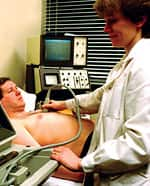Life Extension Magazine®
Nearly 10 million Americans suffer from arrhythmia, or an alteration in rhythm of the heartbeat either in time or force. While conventional medical treatments emphasize dangerous anti-arrhythmia drugs, implantable defibrillators, and other major procedures, you can create a powerful arrhythmia-prevention program by following some simple nutritional strategies. The human heart pumps approximately 100,800 times every day, or about 70 times a minute, every hour of the day, every day of the year. Your heart’s rhythm, however, is not always as reliable as clockwork. What about that flip-flop feeling you get sometimes while lying in bed? Or that pounding in the chest you felt when your boss berated you on a project or your teenage son pushed you to your limit? When is irregular or rapid heart rhythm just a passing, harmless phenomenon and when is it a harbinger of trouble—real trouble? In truth, we all have some measure of irregularity to our heartbeats, and no one’s heart rhythm is perfectly regular. Beat-to-beat variation, in fact, is a desirable feature of heart rhythm that indicates good overall health. The most physically fit athletes, for example, have the greatest degree of heartbeat variation. Heartbeat variability is a reflection of parasympathetic nervous system tone (the opposite of the “fight or flight” sympathetic system), which is the beneath-your-consciousness control system that encourages low blood pressure and feelings of relaxation and calm. People who meditate or use biofeedback can ratchet up their parasympathetic tone and thereby increase their beat-to-beat variation in heart rate. By contrast, lack of beat-to-beat variation can suggest hidden dangers and the potential for heart attack and even death. This lack of variation is not something we can measure ourselves; it must be assessed using an electrocardiogram or extended recording of rhythm. At some point, however, your heart’s rhythm can violate its controls and exceed healthy limits of variability. This condition is called arrhythmia. Some arrhythmias are benign and simply an annoyance (albeit a frightening one when your heart feels as though it is jumping and racing). Others, however, can be life threatening. How can you tell the difference? And when are nutritional strategies reasonable and a safe alternative or adjunct to conventional therapies?
Understanding Heart RhythmSeveral basic features characterize heart rhythm and can help us understand whether dangers are present or we are just experiencing harmless irregularity.
Pros and Cons of Rhythm MedicationsThrough the years, mishaps and unexpected side effects have plagued arrhythmia-suppressing prescription medications, also referred to as anti-arrhythmics. The drug encainide, for instance, was widely prescribed in the 1980s but withdrawn from the market when reports of serious adverse effects began to accumulate. While this agent was marvelously effective in suppressing arrhythmias, the most dangerous heart arrhythmias of all—ventricular tachycardia and fibrillation, and an unusual rhythm called “Torsade de Pointes”—actually increased with treatment. This and similar experiences underscored that simply suppressing irregular heartbeats may not translate into better outcomes. Moreover, many anti-arrhythmia medications carry the risk of serious side effects. The agent procainamide, for example, can cause a lupus-like syndrome. Use of amiodarone has been clearly related to thyroid disorders, liver dysfunction, and incapacitating and sometimes fatal lung disease. Tambocor™, a Class I anti-arrhythmic drug, has been associated with an increased risk of mortality. The Life Extension Foundation first reported on the dangers of Tambocor™ in the June 1995 issue of Life Extension, noting that evidence of its risks did not prevent the FDA from approving the drug. Despite a large study by the National Heart, Lung and Blood Institute that showed that Tambocor™ and related drugs had killed a large number of Americans, Tambocor™ remains on the market today. (See also “Cardiac Drugs That Cause Heart Attack,” Life Extension, June 2003.) Because of their risks, these agents are reserved for the most dangerous heart arrhythmias. The imperfections and pitfalls of rhythm-modulating medications have led many cardiologists to favor implanted defibrillators that deliver an internal shock to the patient to terminate life-threatening arrhythmias. Even in cases of serious arrhythmias, however, nutritional supplements can play a preventive role.
Is There an Ideal Anti-Arrhythmia Treatment?What would the ideal anti-arrhythmia treatment accomplish? It would eliminate excessive irregular beats and do so with few or no side effects. But it would also protect the heart from dangerous, life-threatening heart rhythms. The ideal anti-arrhythmia treatment would also help curb different varieties of arrhythmias, of which there are several dozen. It is not uncommon, for instance, for a person to have both atrial fibrillation (an irregular rhythm originating from the top of the heart and a risk for stroke) and ventricular arrhythmias (related to a previous heart attack). A single, effective agent for both disorders would be desirable. It might even provide benefits beyond arrhythmia suppression. Unfortunately, no prescription anti-arrhythmia agent on the market today even comes close to qualifying as ideal. A large body of compelling data argues strongly in favor of certain nutritional approaches to reducing or suppressing some rhythm disorders. While it would be ill advised to treat one’s own arrhythmia, great success can be achieved employing preventive nutritional strategies that may diminish the likelihood of future arrhythmias or lower the frequency and severity of an established rhythm disorder. | ||||
Fish Oil: Powerful Heart ProtectionInexpensive, safe, and effective, fish oil is the closest thing we have to an ideal anti-arrhythmia agent. Fish oil is the most concentrated source of the omega-3 fatty acids eicosopentaenoic acid (EPA) and docosapentaenoic acid (DHA). Fish oil not only sharply reduces the frequency of irregular beats, but also diminishes the likelihood of death from dangerous arrhythmias. It also increases desirable heart-rate variability, probably by favorably influencing parasympathetic nervous system tone.1 Fish oil achieves all this without significant side effects, an advantage lacking in every prescription anti-arrhythmia medication.
The Diet and Reinfarction Trial, or DART, was the first randomized clinical trial demonstrating the benefits of fish oil versus placebo. Conducted by Dr. Michael Burr at the University of Wales in 1989, the trial enrolled 2,033 men who had had a previous heart attack. Those who ate fish twice a week saw a 29% drop in all-cause death. Curiously, there was no decrease in the number of heart attacks, only in deaths from heart attack. Dr. Burr and his colleagues reasoned that fish oil likely suppresses abnormal rhythms generated by damaged heart muscle.2 The GISSI-Prevenzione trial, an Italian study reported in 1999, persuasively confirmed fish oil’s anti-arrhythmic benefits.3 In this large trial, more than 11,000 subjects who had recently survived a heart attack took either a combined 1000 mg daily of EPA and DHA, or placebo. Those receiving fish oil experienced a 20% reduction in total mortality,3 with much of the benefit attributable to a 53% reduction in sudden cardiac death that emerged during follow-up at four months.4 Fish oil’s rhythm-suppressing properties are so effective that some cardiologists are now recommending that patients with implanted defibrillators, which are used only for life-threatening heart rhythms, take fish oil to reduce their hearts’ rhythm instability and to cut down on defibrillator firings, which are both painful and frightening. What about taking fish oil to prevent dangerous rhythms in people without known heart disease? The Physicians’ Health Study provides some perspective. During 11 years of observation, participants who died from sudden death had much lower blood levels of omega-3 fatty acids than those who did not. Eating just one or more servings of fish weekly yielded a 52% reduction in the risk of sudden death.5 Numerous experimental preparations have demonstrated that fish oil powerfully inhibits the cellular phenomena that drive arrhythmias. By contrast, arachidonic acid, which results from intake of omega-6 fatty acids, increases the potential for arrhythmias. Fish oil also reduces the blood-clotting protein fibrinogen and inhibits platelet aggregation, which prevents blood-clot formation on active, ruptured coronary plaque that would otherwise result in heart attack.6
An intriguing but unanswered question is whether fish oil suppresses the common rhythm called atrial fibrillation, which occurs when the heart’s two small upper chambers quiver instead of beating effectively. Because blood is not pumped out of the atria effectively, it can pool and clot, increasing the risk for stroke. Atrial fibrillation plagues around 10% of people aged 80 and over, and is a frequent cause of hospitalization. Conven-tional medical treatment for atrial fibrillation is fraught with side effects and is of limited effectiveness, and better therapies are sorely needed.7 Fish oil has impressively suppressed atrial fibrillation in experimental non-human preparations.8 People who suffer from this rhythm also have significantly lower levels of omega-3 intake.9 Does taking fish oil prevent this terribly common rhythm? That question remains unanswered, yet the evidence supporting fish oil supplementation is so compelling for other reasons that it is difficult to argue against a preventive use of fish oil for this purpose. A secondary source of omega-3 fatty acids is alpha-linolenic acid (ALA), found in flaxseed, walnuts, and canola oil. When humans ingest ALA, however, only 10% of it is converted into active EPA or DHA, while most of the rest is simply burned for calories. The preponderance of existing data suggests that fish oil capsules delivering a daily dose of approximately 1000-2000 mg of EPA and DHA are likely to yield substantial heart-rhythm benefits. Conventional fish oil preparations contain 30% EPA and DHA, or 300 mg of EPA/ DHA per 1000-mg capsule. Heart Benefits of MagnesiumMagnesium is a crucial nutrient that helps ensure the proper functioning of approximately 300 enzymes in the human body. Unfortunately, the average Amer-ican ingests substantially less than the daily recommended dietary allowance (RDA) of 420 mg of magnesium for men and 320 mg for women. Daily deficiencies of 10% or more are common.10 Moreover, several epidemiological studies have demonstrated that magnesium intake is dropping precipitously as Americans consume ever greater amounts of magnesium-depleted processed foods. Soft drinks are manufactured using de-ionized water and are essentially devoid of magnesium. Carbon-ated beverages like soda contain phosphates that bind magnesium in the intestinal tract, making it unavailable for absorption. To make matters worse, more of us are drinking bottled water, and most retail brands contain little or no magnesium.
Even tap water is adding to the problem. As municipal and home water-treatment systems convert “hard” water into “soft” water, magnesium is removed. Meas-urable increases in the risk of sudden death have been reported in municipalities with the lowest levels of magnesium in their drinking water.11 A recent World Health Organization report on the quality of drinking water cited 80 studies that have examined the relationship between cardiovascular death and water “hardness” (measured principally by magnesium and calcium content). The report concluded that the magnesium content of water is indeed a cardiovascular risk and should become a priority for water supplementation.12 Magnesium blood levels are routinely monitored in hospitalized patients, particularly if diuretics are administered. It is a fact that when magnesium blood levels are low, arrhythmia tends to occur. Premature or irregular heartbeats are common, as are nuisance rhythms like supraventricular tachycardia. Dangerous ventricular rhythms such as ventricular tachycardia and Torsade de Pointes can also result. People suffering from congestive heart failure are especially susceptible to these rhythms when magnesium levels are low. People prone to atrial fibrillation can suffer recurrences due to low magnesium levels. Though not as immediately life threatening as ventricular rhythms, atrial fibrillation can still necessitate complicated treatments and increase the risk of stroke.13 The problem with measuring blood levels of magnesium is that they are poor indicators of the body’s true (intracellular) magnesium levels. If blood magnesium levels are low, then cellular magnesium levels are undoubtedly low as well. If blood magnesium levels are normal, however, one may still have low tissue levels of magnesium. The most striking reduction in tissue magnesium is found in the heart muscle, or myocardium. Unfortunately, determining tissue magnesium levels is not easy in living, breathing humans. In one study, only 8% of coronary patients were found to be low in blood measures of magnesium, but tissue levels of magnesium were found to be depleted in 53% of the subjects.14 Some cardiologists will therefore administer intravenous magnesium to patients with rhythm disorders, even when blood magnesium is in the normal range. How do you know whether your magnesium level is low? Several signs can tip you off:
While the treatment of specific abnormal heart rhythms should be left to your physician or cardiologist, ensuring sufficient magnesium intake is an excellent preventive strategy that is strongly supported by the scientific literature. This is especially true if you have been prescribed a diuretic for treatment of hypertension, congestive heart failure, or edema, or for other reasons. Favorable magnesium levels in the body tend to make rhythms like atrial fibrillation and supraventricular tachycardias—as well as dangerous ventricular rhythms such as ventricular tachycardia and Torsade de Pointes—less likely to occur.15 Although some investigators have argued that magnesium administered during acute heart attack does not reduce the risk of dying from fatal heart rhythms,16 magnesium can be very effective in less dire situations. Because low magnesium tissue levels are virtually endemic in the US, magnesium supplementation should be practiced by nearly everyone. Many epidemiologists have proposed supplementing tap water with magnesium, just as fluoride is added to prevent tooth decay. Magnesium supplements are safe and inexpensive, and the only side effect is diarrhea, which generally occurs with daily doses in excess of 250 mg. For this reason, many over-the-counter laxatives contain magnesium; however, long-term use of laxatives is not advised without medical supervision. For magnesium supplementation, a recommended dose is 300-500 mg daily. Magnesium citrate is a convenient, highly absorbable form that provides elemental magnesium in a capsule form. Magnesium is best taken in distributed doses throughout the day in order to avoid diarrhea. Good dietary sources of magnesium are shown in the accompanying sidebar, “Foods Rich in Magnesium.” | ||||
CoQ10 Strengthens Heart MuscleCoenzyme Q10 (CoQ10) is found in human mitochondria, the energy-generating powerhouses of the body’s cells. CoQ10 has been in the spotlight recently because cholesterol-lowering statin drags are believed to deplete CoQ10 levels in muscle tissue, thus causing the common muscle aches suffered by many statin users.17 CoQ10 also has an effect in stabilizing cell membranes, a property that might have potential for influencing heart rhythms.18 Arrhythmias commonly occur when there is abnormal weakness of the heart muscle (as after heart attack), a viral infection of the heart, or abnormal thickening of the heart muscle, which is common in people with high blood pressure. Both situations are irritating to the heart and can make it electrically unstable and thereby generate arrhythmia. Considerable data accumulated over the past 20 years have shown that CoQ10 supplementation can benefit people with weakened heart muscle. When 30% or more of the main contractile chamber of the heart—the left ventricle—is damaged, congestive heart failure can result. In a study of 1,715 patients conducted in Italy, daily supplementation with 50 mg of CoQ10 produced substantial improvement in ease of breathing, edema, blood pressure, and palpitations (a subjective sensation suggesting arrhythmia).19 In another large Italian study, 2,664 patients with moderate heart failure who supplemented with 50-150 mg of CoQ10 daily for three months saw similar improvements.20 In a review of nine smaller studies that sought to determine whether CoQ10 supplementation improves the strength of the left ventricular heart muscle, the pooled data suggested modest benefit.21 Whether CoQ10 reduces mortality—that is, reduces the risk of fatal arrhythmias—remains uncertain, as no study to date has specifically examined this question. Overall, however, the data are consistent in showing that people feel and breathe better, suffer less edema in the legs, experience fewer palpitations, and are able to exercise longer when taking CoQ10. Most convincing is the evidence of CoQ10’s effectiveness in reducing high blood pressure. A literature review examining eight studies showed that CoQ10 supplementation, in daily doses generally ranging from 50 mg to 200 mg, reduced systolic blood pressure by an average of 16 mm Hg and cut diastolic blood pressure by an average of 10 mm Hg.21 Additional data from researchers at the University of Texas suggest that CoQ10 may substantially regress abnormal heart muscle thickening, or “hypertrophy,” resulting from high blood pressure.22,23 Some but not all prescription anti-hypertensive drugs achieve this desirable effect. High blood pressure and its associated thickened heart muscle underlie several varieties of abnormal heart rhythm, especially atrial fibrillation.
Only a limited number of studies specifically examine whether CoQ10 reduces abnormal rhythms, in addition to strengthening heart muscle and regressing heart thickness. In a small Indian study, participants who took 120 mg of CoQ10 daily saw a dramatic drop of 25.3% in abnormal heart rhythms during recovery from heart attack, compared to a 9.5% decline in those administered a placebo.24 In a small Japanese study examining the effects of CoQ10 supplementation in 27 subjects with high blood pressure and diabetes, 24-hour heart-rhythm recorders (known as Holter recorders) documented a substantial decrease in the frequency of irregular ventricular rhythms.25 A safe, effective nutritional agent that is virtually free of side effects, CoQ10 may help lessen the long-term risk of arrhythmias through its actions in substantially lowering blood pressure, regressing abnormal ventricular hypertrophy, and increasing left ventricular muscle strength. It is not clear whether CoQ10 has a direct action in reducing arrhythmia or whether it simply helps correct the underlying conditions that lead to arrhythmia. CoQ10 is best used as a preventive agent to lessen the likelihood of developing arrhythmias or as an adjunct to prescribed anti-arrhythmia treatments.
Hawthorn Shows PromiseHawthorn (Crataegus oxyacantha) is a small, native European tree whose berries, flowers, and leaves have been used therapeutically since the Middle Ages. In modern times, hawthorn has drawn attention as an aid in treating congestive heart failure. A recent meta-analysis of eight clinical trials involving a total of 632 patients affirmed hawthorn’s value in treating heart failure, with effects including diminished breathlessness and fatigue, and increased exercise capacity.26 Hawthorne has also been shown to reduce blood pressure.27 One study showed significantly fewer palpitations and arrhythmias in those taking hawthorn.27 A large clinical trial is now under way to examine whether the reduction in arrhythmia translates into better outcomes. (As noted earlier, some studies of anti-arrhythmia medication have shown that reduced rhythm irregularity does not necessarily translate into better outcomes.) Although the clinical evidence for hawthorn’s role in preventing and reducing arrhythmia remains somewhat limited, this is a promising supplement that bears watching. ConclusionHeart arrhythmia involves many complex issues that can befuddle even the most experienced cardiologists. Paradoxically, the apparently obvious strategy of suppressing abnormal heartbeats does not necessarily lead to improved outcomes. Nutritional approaches should be used as adjuvant strategies for heart rhythm suppression or treatment. They can provide practical methods to prevent the emergence of several varieties of common arrhythmias, as well as address some of the conditions that cause arrhythmias to develop in the first place. Fish oil rich in omega-3 fatty acids, magnesium, and CoQ10 are three powerful supplements for arrhythmias that can play a crucial role in fashioning an effective arrhythmia-prevention program. Dr. William Davis is an author, lecturer, and practicing cardiologist focusing on coronary disease regression. He is author of Track Your Plaque, and can be contacted at www.trackyourplaque.com. | ||||||||||||||||||||||||||||||||||||||||||||||||||||||||||||||||
| References | ||||||||||||||||||||||||||||||||||||||||||||||||||||||||||||||||
| 1. Albert C. Fish oil—an appetising alternative to anti-arrhythmic drugs? Lancet. 2004 May 1;363(9419):1412-3. 2. Burr ML, Fehily AM, Gilbert JF, et al. Effects of changes in fat, fish, and fibre intakes on death and myocardial reinfarction: diet and reinfarction trial (DART). Lancet. 1989 Sep 30;2(8666):757-61. 3. No authors listed. Dietary supplementation with n-3 polyunsaturated fatty acids and vitamin E after myocardial infarction: results of the GISSI-Prevenzione trial. Lancet. 1999 Aug 7;354(9177):447-55. 4. Marchioli R, Barzi F, Bomba E, et al. Early protection against sudden death by n-3 polyunsaturated fatty acids after myocardial infarction: time-course analysis of the results of the Gruppo Italiano per lo Studio della Sopravvivenza nell’Infarcto Miocardico (GISSI)-Prevenzione. Circulation. 2002 Apr 23;105(16):1897-903. 5. Albert CM, Hennekens CH, O’Donnell CJ, et al. Fish consumption and risk of sudden cardiac death. JAMA. 1998 Jan 7;279(1):23-8. 6. Uauy R, Valenzuela A. Marine oils: the health benefits of n-3 fatty acids. Nutrition. 2000 Jul-Aug;16(7-8):680-4. 7. Bloom HL. Concise review of atrial fibrillation: treatment update considerations in light of AFFIRM and RACE. Clin Cardiol. 2004 Sep;27(9):495-500. 8. Jahangiri A, Leifert WR, Patten GS, McMurchie EJ. Termination of asynchronous contractile activity in rat atrial myocytes by n-3 polyunsaturated fatty acids. Mol Cell Biochem. 2000 Mar;206(1-2):33-41. 9. Harris WS. Are omega-3 fatty acids the most important nutritional modulators of coronary heart disease risk? Curr Atheroscler Rep. 2004 Nov;6(6):447-52. 10. Eisenberg MJ. Magnesium deficiency and sudden death. Am Heart J. 1992 Aug;124(2):544-9. 11. Anderson TW, LeRiche WH, MacKay JS. Sudden death and ischemic heart disease. Correlation with hardness of local water supply. N Engl J Med. 1969 Apr 10;280(15):805-7. 12. Available at: http://www.who.int/water_sanitation_health/dwq/nutrients/en. Accessed November 12, 2004. 13. Eisenberg MJ. Magnesium deficiency and cardiac arrhythmias. NY State J Med. 1986 Mar;86(3):133-6. 14. Purvis JR, Movahed A. Magnesium disor- ders and cardiovascular diseases. Clin Cardiol. 1992 Aug;15(8):556-68. 15. Chung MK. Vitamins, supplements, herbal medicines, and arrhythmias. Cardiol Rev. 2004 Mar-Apr;12(2):73-84. 16. The magnesium in coronaries (MAGIC) trial investigators. Early administration of intravenous magnesium to high-risk patients with acute myocardial infarction in the magnesium in coronaries (MAGIC) trial: a randomised controlled trial. Lancet. 2002 Oct 19;360(9341):1189-96. 17. Rundek T, Naini A, Sacco R, Coates K, DiMauro S. Atorvastatin decreases the coenzyme Q10 level in the blood of patients at risk for cardiovascular disease and stroke. Arch Neurol. 2004 Jun;61(6):889-92. 18. Rauchova H, Drahota Z, Lenaz G. Function of coenzyme Q in the cell: some biochemical and physiological properties. Physiol Res. 1995;44(4):209-16. 19. Lampertico M, Comis S. Italian multicenter study on the efficacy and safety of coenzyme Q10 as adjuvant therapy in heart failure. Clin Investig. 1993;71(8 Suppl):S129-33. 20. Baggio E, Gandini R, Plancher AC, Passeri M, Carmosino G. Italian multicenter study on the safety and efficacy of coenzyme Q10 as adjunctive therapy in heart failure. CoQ10 Dug Surveillance Investigators. Mol Aspects Med. 1994;15 Suppl:s287-94. 21. Rosenfeldt F, Hilton D, Pepe S, Krum H. Systematic review of effect of coenzyme Q10 in physical exercise, hypertension and heart failure. Biofactors. 2003;18(1-4):91-100. 22. Langsjoen PH, Langsjoen PH, Folkers K. Isolated diastolic dysfunction of the myocardium and its response to CoQ10 treatment. Clin Investig. 1993;71(8 Suppl):S140-4. 23. Langsjoen P, Langsjoen P, Willis R, Folkers K. Treatment of essential hypertension with coenzyme Q10. Mol Aspects Med. 1994;15 Suppl:S265-72. 24. Singh RB, Wander GS, Rastogi A, et al. Randomized, double-blind placebo-controlled trial of coenzyme Q10 in patients with acute myocardial infarction. Cardiovasc Drug Ther. 1998 Sep;12(4):347-53. 25. Fujioka T, Sakamoto Y, Mimura G. Clinical study of cardiac arrhythmias using a 24-hour continuous electrocardiographic recorder (5th report)—antiarrhythmic action of coenzyme Q10 in diabetics. Tohoku J Exp Med. 1983 Dec;141 Suppl:453-63. 26. Pittler MH, Schmidt K, Ernst E. Hawthorn extract for treating chronic heart failure: meta-analysis of randomized trials. Am J Med. 2003 Jun 1;114(8):665-74. 27. Tauchert M, Gildor A, Lipinski J. High-dose crataegus extract WS 1442 in the treatment of NYHA stage II heart failure. Herz. 1999 Oct;24(6):465-74; discussion 475. | ||||||||||||||||||||||||||||||||||||||||||||||||||||||||||||||||










